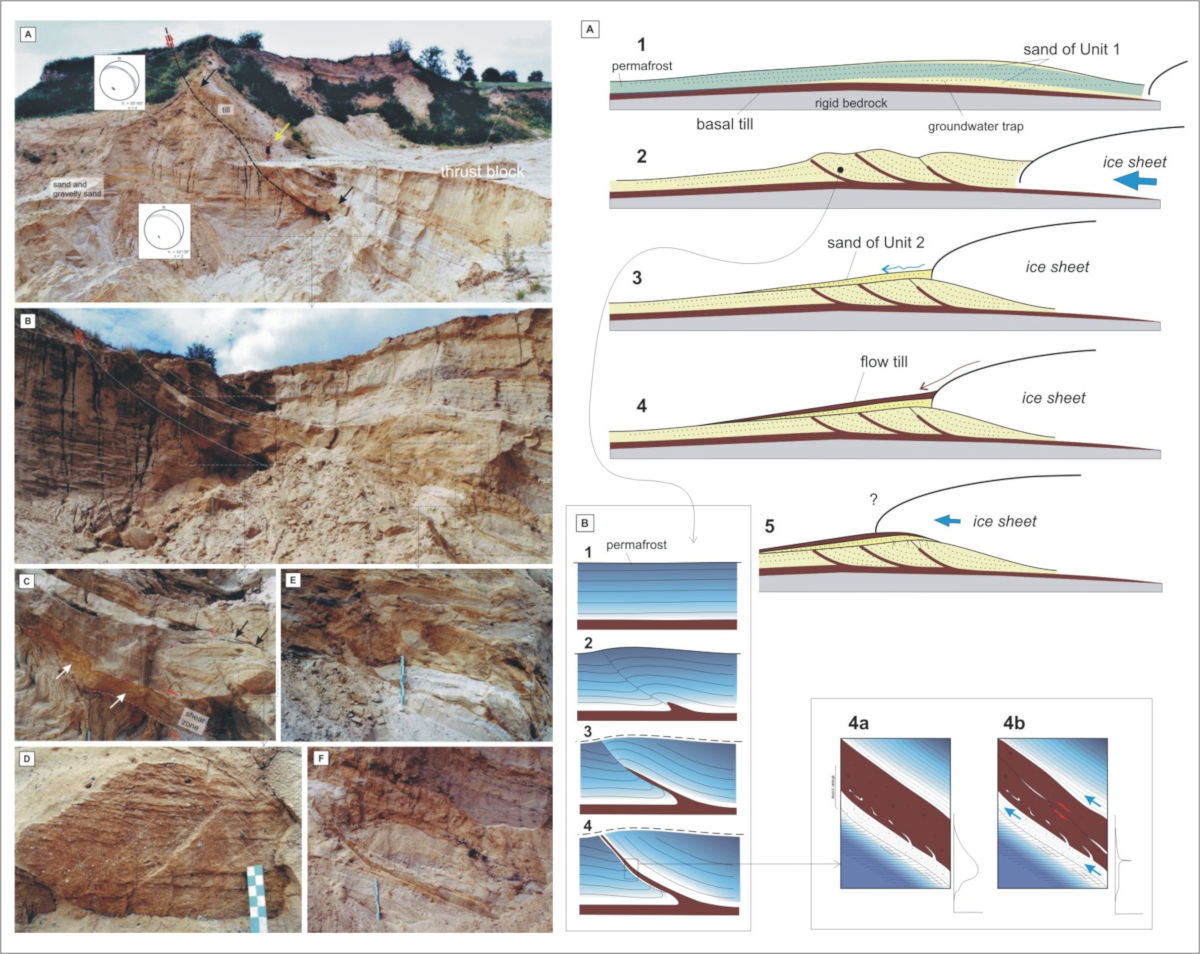The paper presents a rare case of a push-moraine formed in front of the Scandinavian Ice Sheet margin at the forefield of mountains. The studied succession, which is composed of tills and sands deposited at the surface of the glacier’s marginal fan, developed in the culmination zone of a hill, the base of which constitutes tectonic horst built of Carboniferous sandstones. Resistant Palaeozoic bedrock formed a rigid surface along which overlying unconsolidated sediments were pushed in front of the advancing ice sheet margin. The diamicton, lying above the bedrock and beneath the glaciofluvial sand, was of key importance for the development of the push moraine. It underwent ductile shearing, and a décollement surface developed within it, possibly because of thin permafrost, which caused high pore-water pressure within underlying unfrozen diamicton during the ice sheet advance.
The research was funded from “Małe Projekty 2021” financed from the reserve of the Institute of Earth Sciences Director.
Reference: https://doi.org/10.1016/j.geomorph.2022.108349
Note author: dr. hab. Tomasz Salamon






